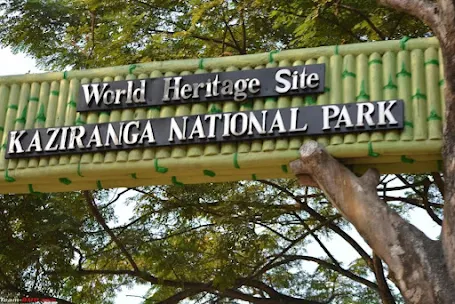Kaziranga National Park is a protected area located in the northeastern state of Assam, India. The park is known for its exceptional beauty and wildlife conservation efforts. Covering an area of 430 square kilometers, it is home to a diverse range of flora and fauna.
Kaziranga National Park is particularly famous for being the home of the world's largest population of one-horned rhinoceroses. The park has over 2,400 rhinos, which make up two-thirds of the world's population of this endangered species. In addition to rhinos, the park is also home to significant populations of other wildlife species such as tigers, elephants, water buffaloes, and swamp deer, among others. The park is also an important birdwatching destination, with over 480 species of birds having been recorded in the park.
The landscape of Kaziranga National Park is diverse and includes tropical forests, grasslands, wetlands, and floodplains. The Brahmaputra River flows through the park, creating several small islands that are home to a variety of wildlife. The park also has several lakes and ponds that provide critical water sources for the animals.
Kaziranga National Park has significant cultural significance as well, as it is home to several indigenous communities such as the Mishing, Karbi, and Bodo tribes. These communities have lived in harmony with the park's wildlife for generations and have a deep connection to the land.
The history of Kaziranga National Park dates back to the early 20th century when Mary Curzon, the wife of the Viceroy of India, visited the area and was appalled by the rampant hunting of wildlife. In response, the British colonial government established the Kaziranga Proposed Reserve Forest in 1905 to protect the area's wildlife. The area was declared a wildlife sanctuary in 1950 and a national park in 1974. In 1985, Kaziranga was declared a UNESCO World Heritage Site in recognition of its ecological significance.
Today, Kaziranga National Park is managed by the Assam Forest Department and is a popular tourist destination. The park is open to visitors from November to April each year and offers several activities such as jeep safaris, elephant safaris, and birdwatching tours. Visitors can also stay at several resorts and lodges located near the park.
However, Kaziranga National Park faces several challenges to its conservation efforts. The park is located in a densely populated area, and human-wildlife conflicts are a significant issue. The park's grasslands are also regularly affected by fires, which can be detrimental to the wildlife. Additionally, poaching remains a significant threat to the park's wildlife, particularly its rhinos.
The Assam Forest Department has taken several measures to address these challenges. They have established a network of anti-poaching camps and have increased patrols to protect the park's wildlife. The department has also implemented controlled burning of grasslands to prevent wildfires and has developed programs to promote sustainable livelihoods for local communities.
In conclusion, Kaziranga National Park is a unique and remarkable natural area that is critical to the conservation of several endangered species. The park's rich wildlife, diverse landscape, and cultural significance make it an important destination for both tourists and conservationists. However, the park faces several challenges to its conservation efforts, and continued efforts are needed to protect its unique ecosystem for future generations.



.jpeg)